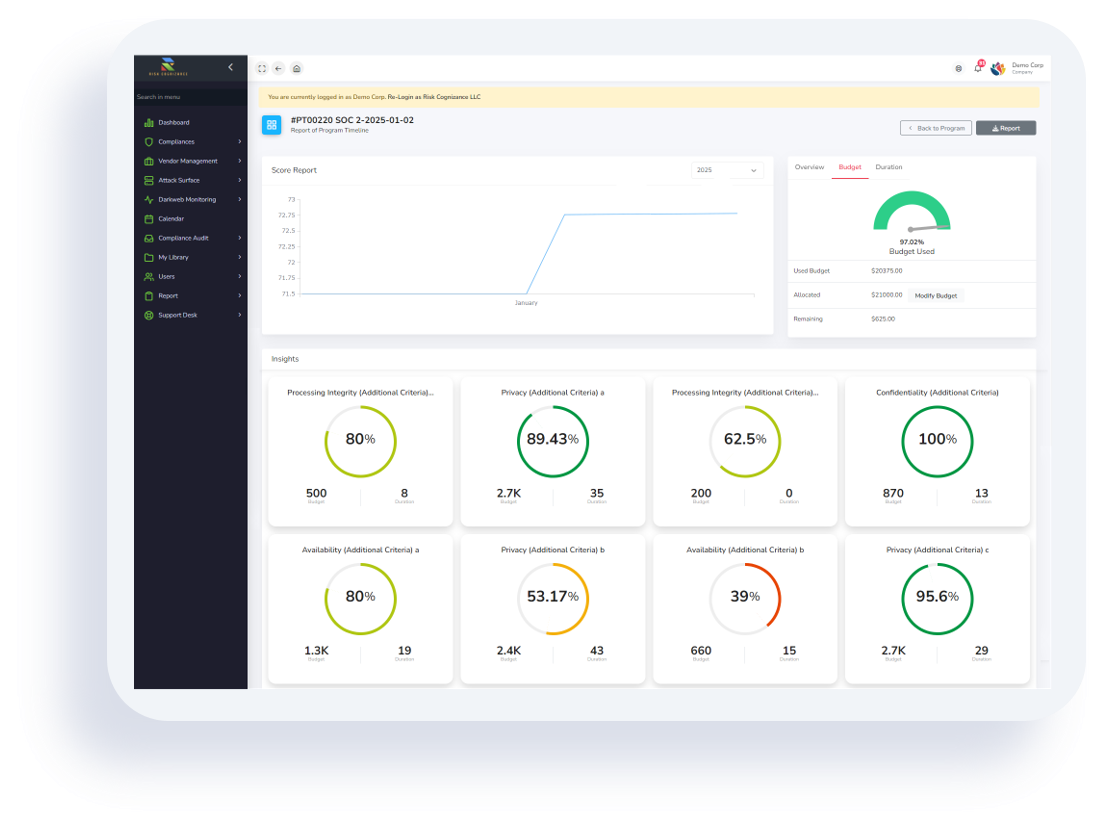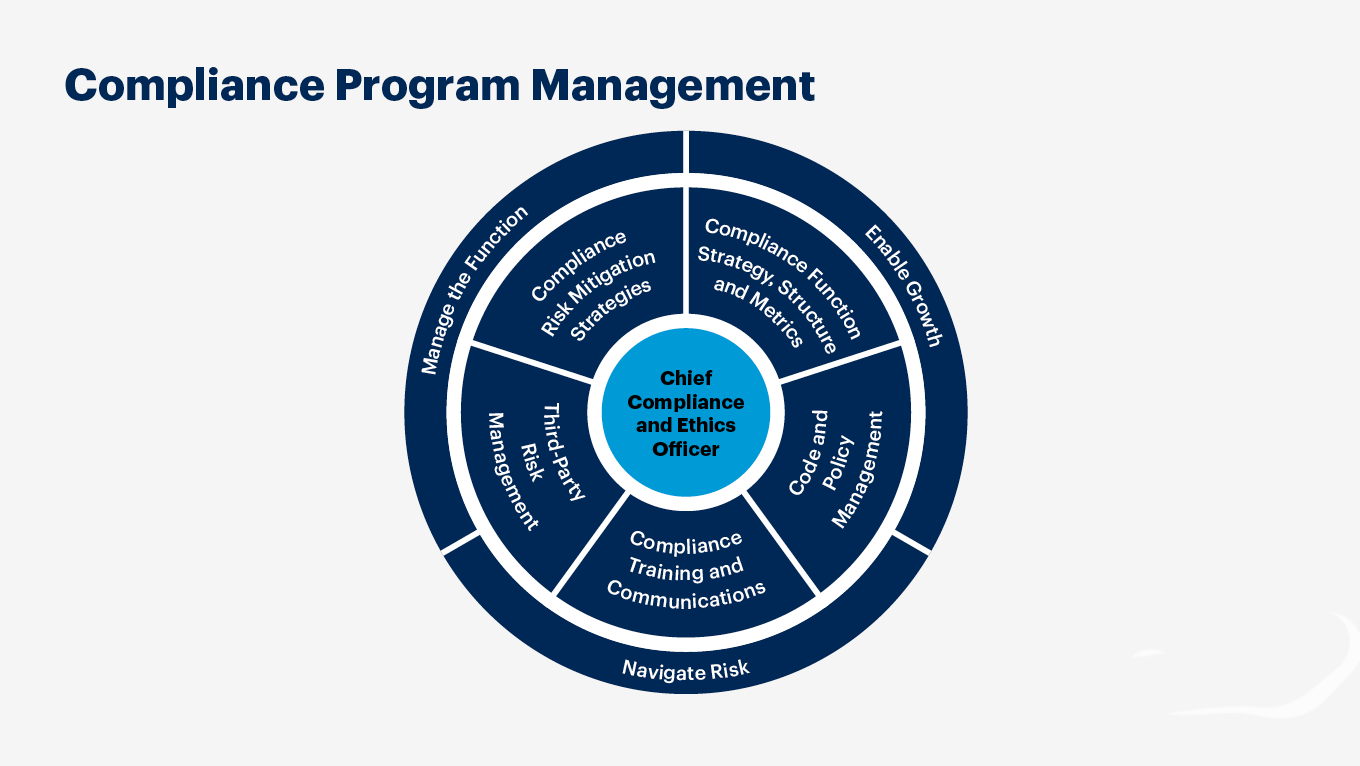
Safeguarding Your Business from Third-Party Cybersecurity Risks
Safeguarding Your Business from Third-Party Cybersecurity Risks
In a interconnected business world, success often depends on partnerships with third-party vendors and contractors.
While these relationships offer immense benefits in terms of efficiency and expertise, they also introduce a new set of critical cybersecurity risks. A security breach originating from a third party can be just as devastating as an internal one, making the protection of your business intrinsically linked to the security of your external partners.
What is TPRM and Supplier Risk Management?
- Third-Party Risk Management (TPRM) is a comprehensive process that analyzes and minimizes the risks associated with outsourcing to external vendors or service providers. It’s an essential component of a modern cybersecurity program, focusing on the entire lifecycle of a third-party relationship, from initial due diligence to continuous monitoring and off-boarding.
- Supplier Risk Management (SRM) is a term often used interchangeably with TPRM, but it can be more specifically focused on the operational and financial risks within the supply chain. While TPRM often has a broad focus on cybersecurity, compliance, and privacy, SRM is more directly concerned with the continuity of supply, quality control, and financial health of suppliers to ensure business objectives are met. Both are critical for a resilient business.
Why TPRM and SRM Are Critical to Your Business
The risks posed by third parties are not just theoretical; they can have a direct and severe impact on your bottom line and reputation.
- Compliance and Regulatory Adherence: Regulations like GDPR and SEC rules hold primary organizations accountable for their vendors' actions. A robust TPRM program is essential for demonstrating due diligence and avoiding hefty fines.
- Operational Resilience: A disruption at a key supplier can bring your business to a halt. Effective SRM ensures business continuity by identifying and mitigating these vulnerabilities before they impact your operations.
- Reputation Protection: A data breach at a third-party vendor can severely damage your brand and client trust, even if the breach did not occur on your network. Proactive TPRM prevents this reputational harm.
- Cybersecurity Risk Reduction: Each vendor adds to your organization's attack surface. TPRM helps manage this complexity by ensuring all third parties adhere to high security standards, reducing the entry points for cyberattacks.
Key Third-Party Risks to Recognize
Managing third-party risk starts with understanding the threats you face. Here are some of the most common risks:
- Broad Access: Many vendors are given broad access to sensitive information, making them a prime target for cybercriminals.
- Supply Chain Vulnerabilities: An attack on a single third-party vendor can be a gateway to multiple organizations, leading to a large-scale supply chain attack.
- AI Exposure: The increasing use of third-party AI tools can inadvertently expose company data through large language models if not managed carefully.
- Regulatory Scrutiny: Regulatory bodies are proposing and enacting new rules that increase the scrutiny on how businesses manage third-party relationships, requiring a more formal and proactive approach.

Best Practices for Managing Third-Party Risk
A successful TPRM strategy requires a phased and continuous approach. Here are some best practices to implement:
- Thorough Due Diligence: Before engaging any vendor, conduct a deep dive into their security practices, policies, and track record.
- Clear Contractual Agreements: Establish clear security expectations in your contracts, including incident response protocols and security requirements.
- Limit Data Access: Adhere to the principle of least privilege by providing vendors with access only to the data and systems they absolutely need to do their job.
- Continuous Monitoring: A one-time security check is not enough. Continuously monitor vendor activities and security posture to ensure they maintain compliance and security standards over time.
Review SOC Reports: Request and review System and Organization Controls (SOC) reports from your vendors to get an independent assessment of their internal controls.
The Power of Threat Intelligence in TPRM
To effectively manage third-party risk, you must move beyond static assessments and integrate dynamic threat intelligence. Threat intelligence provides a deeper understanding of the external landscape, allowing you to be more proactive in your risk management efforts. Here are six types of threat intelligence crucial for vendor management:
- Strategic Threat Intelligence: High-level intelligence to understand the overall threat landscape and the types of attacks targeting your industry.
- Tactical Threat Intelligence: Information on the specific tactics, techniques, and procedures (TTPs) used by threat actors, helping security teams defend against known attack patterns.
- Technical Threat Intelligence: The most granular form, providing indicators of compromise (IoCs) like malicious IP addresses, known malware signatures, and phishing domains.
- Operational Threat Intelligence: Insight into a threat actor's motives and capabilities, derived from sources like the dark web and hacker forums.
- Vulnerability Intelligence: Focuses on newly discovered vulnerabilities in software and hardware used by your vendors, helping you ensure they are patching critical systems promptly.
- Dark Web and Social Media Intelligence: Monitoring the dark web and social media for mentions of your company or your vendors to get early warnings of potential data breaches or planned attacks.
The journey to safeguarding your business from third-party risks is continuous, requiring constant vigilance, adaptation, and the right tools. By implementing a proactive TPRM strategy, you can build a resilient defense that supports sustainable growth and protects your reputation.
Risk Cognizance: The Continuous Journey to Safeguard Your Assets
Rhe security of an organization's assets is not a destination; it's a continuous journey. It's a journey that demands a strategic approach, where every user and every piece of data is recognized as a potential risk vector. Rather than attempting to secure every asset at once, a more effective strategy is to practice "risk cognizance"—understanding that certain assets are more sensitive and certain users have the potential to cause more damage.
By focusing on a phased rollout of secure access, organizations can achieve the greatest return on their security investment. The first and most critical phase involves securing privileged access scenarios, which are often the most vulnerable points of entry for attackers.
The Relationship Between GRC, TPRM, and Risk Cognizance
Risk cognizance is the foundational mindset that drives a successful GRC strategy. It's the awareness that not all risks are equal and that resources should be prioritized to address the most significant threats.
- GRC (Governance, Risk, and Compliance) provides the overarching framework. It's the structured approach that helps an organization align its operations with regulations, manage all types of risks (both internal and external), and uphold internal policies. TPRM is a crucial, specialized component that fits within this larger GRC framework.
- TPRM (Third-Party Risk Management) is the specific practice of identifying, assessing, and mitigating risks that arise from external vendors, suppliers, contractors, and service providers. It is the direct application of a GRC strategy to the external ecosystem, focusing on the unique vulnerabilities that third-party relationships introduce.
Essentially, risk cognizance is the "why" and "how" of a strategic approach, GRC is the overarching management system, and TPRM is the targeted tool used to manage the specific risks posed by your third-party network.
_1725822920.png)

Security Of Your Business is Linked To Your Third-Party Providers
Businesses rarely operate in isolation. They depend on a web of third-party providers, including vendors, suppliers, and contractors, to function efficiently and meet their objectives. This reliance on external partners, while essential for growth and innovation, has created a new and critical vulnerability: your business's security is now inextricably linked to the security of your third-party providers.
A cyberattack on a vendor, a supplier with weak security controls, or a contractor with privileged access can become a direct pathway into your own network. This reality makes a proactive and comprehensive approach to managing these relationships not just a best practice, but a fundamental requirement for survival in the modern threat landscape.
The Third-Party Attack Surface
Every time you onboard a new vendor or grant a third-party access to your data or systems, you are expanding your "attack surface"—the total number of entry points an attacker could use to compromise your organization. This is why a simple handshake agreement or a one-time security questionnaire is no longer enough. The risk landscape is dynamic, and your defense must be as well.
Understanding Key Risks
To protect your business, you must first understand the specific risks posed by your external partners:
- Broad Access Risks: Many third-party relationships require vendors to have access to sensitive information or critical systems. If this access is not properly managed and restricted based on the principle of least privilege, a compromise of that vendor can lead directly to a breach of your most valuable assets.
- Supply Chain Vulnerabilities: A single security flaw in a piece of software or hardware provided by a third party can create a vulnerability that affects hundreds or even thousands of other companies. Recent high-profile breaches have shown that an attack on a single provider can trigger a widespread, cascading effect across an entire industry.
- Reputational and Financial Risks: A data breach originating from a third party can lead to significant financial loss and severe damage to your brand. Customers and partners may lose trust, and regulatory bodies can impose heavy fines, holding you accountable for your vendors' security failures.
- Operational Disruption: A security incident or outage at a critical supplier can disrupt your operations, halting production, delaying services, and impacting your ability to serve your customers.
Building a Proactive Defense
Managing the security link with your third-party providers requires a structured and continuous approach. Here are the core pillars of an effective strategy:
- Comprehensive Due Diligence: Before you even sign a contract, conduct a thorough assessment of a vendor's security posture. This includes reviewing their policies, technical controls, and compliance certifications (like SOC 2 or ISO 27001). Don’t take their word for it—"trust, but verify."
- Clear Contractual Agreements: Your contracts must include explicit security clauses. These should define security requirements, data handling protocols, and, most importantly, incident response expectations, including a clear timeline for breach notification.
- Implement Continuous Monitoring: A one-time check is a snapshot in time. To manage an ever-changing threat landscape, you need continuous vendor security monitoring. This ongoing process provides real-time visibility into your vendors' security health, alerting you to new vulnerabilities or changes in their security posture.
- Prioritize Vendors by Risk: Not all vendors pose the same level of threat. Categorize your third parties based on the sensitivity of the data they handle and the criticality of their service to your business. This allows you to allocate your resources effectively, focusing rigorous monitoring on your highest-risk partners.
- Restrict and Manage Access: Always adhere to the principle of least privilege. Grant vendors access only to the data and systems they absolutely need to perform their function. Regularly review and revoke access as relationships and needs change.
By embracing these best practices, you can transform the challenge of third-party risk into a strategic advantage. You will not only protect your business from potential threats but also build a more resilient, trustworthy, and secure foundation for long-term success.
Risk Cognizance: The Imperative of Third-Party Risk Management
Working with third-parties is a fundamental part of the modern business landscape. These relationships provide access to specialized skills, enable operational scaling, and offer the flexibility needed to meet customer demands efficiently. Yet, as our reliance on external partners grows, so too does our exposure to risk.
According to a recent Verizon report, nearly 30% of data breaches in 2025 have involved third-party suppliers. This trend underscores a critical business reality: the security of your organization is intrinsically tied to the security of your vendors, contractors, and partners. When a breach originates from a third-party, the average cost to remediate it can be nearly $4.8 million.
In this blog post, we will explore the critical importance of a robust Third-Party Risk Management (TPRM) strategy and provide actionable best practices to make your process more effective and efficient.

What is Third-Party Risk Management?
Third-Party Risk Management (TPRM) is an essential component of any business strategy. It's the process of identifying, assessing, and managing the risks associated with engaging third-party vendors and other outside parties who provide services or products to your organization. By understanding and proactively mitigating the potential security risks that come with these partnerships, enterprises can protect their data, reputation, and bottom line.
To do this effectively, organizations must understand the different types of relationships and the risks associated with each. The typical TPRM lifecycle consists of these key stages:
Risk Assessment: Identify and assess the potential risks of the third-party relationship. This includes evaluating the vendor's financial stability, reputation, legal compliance, and security posture.
- Due Diligence: Conduct thorough due diligence to gather more information. This can involve background checks, reviewing financial statements, and analyzing the third-party's security controls.
- Contract Negotiation: Based on the risk assessment and due diligence, negotiate a contract that includes specific clauses and controls to mitigate identified risks.
- Ongoing Monitoring: Continuously monitor the third-party's activities and controls to ensure ongoing compliance with the contract terms and regulatory requirements.
- Termination: If a relationship is no longer beneficial or its risks cannot be mitigated, terminate it in a way that minimizes any potential impact on your organization.
The Risks Posed by Third and Fourth Parties
In the context of TPRM, a third party is any external vendor or supplier your company engages with to perform a business function. This includes IT service providers, cloud service providers, payment processors, and consultants.
Third parties pose a variety of risks, including:
- Compliance/Legal Risk: A third party violates laws or regulations, resulting in legal or regulatory action against your company.
- Reputation Risk: A third party's negative actions or a security incident reflects poorly on your company, damaging your brand and reputation.
- Financial Risk: A third party fails to deliver on contracted services, leading to financial losses for your company.
- Operational Risk: A third party fails to meet service level agreements (SLAs), causing delays or disruptions to business operations.
- Information Security Risk: A third party's network or systems are compromised, leading to the disclosure of your sensitive information.
- Strategic Risk: The third party's business objectives or strategies conflict with your own.
A Note on Fourth Parties
Fourth parties are vendors or suppliers contracted by your third parties. These companies can introduce unexpected risks into your organization's supply chain that are challenging to manage because you may not have a direct relationship or control over them. For example, if your cloud service provider contracts with a data center provider, that data center is a fourth party to your business.
Recent reports show that a significant number of third-party breaches are actually caused by these "nth" parties, highlighting the importance of a TPRM strategy that vets not just your direct vendors, but also their key partners.
The Real-World Impact of Third-Party Breaches
Major data breaches in recent years have been directly attributed to third parties, demonstrating the disruptive and far-reaching consequences.
- Marks & Spencer (April 2025): A social engineering attack compromised the email credentials of a third-party IT contractor, leading to a breach that exposed over 9.4 million customer records. The incident caused weeks of disruption and an estimated £300 million in costs, prompting the company to overhaul its third-party vetting and adopt a Zero Trust framework.
- Qantas (June 2025): Hackers accessed a third-party platform used by an offshore call center, stealing up to 6 million customer records. This was one of Australia’s most high-profile cyberattacks since 2022.
- American Express (March 2024): A breach at an unnamed third-party merchant processor exposed sensitive customer data, including account numbers and card information.
These examples underscore that the impact of a third-party breach can range from operational disruptions and internal outages to lawsuits, regulatory fines, and a profound loss of trust among customers and employees.
6 TPRM Best Practices for Enterprises
As businesses become more interconnected and threats become more sophisticated, here are six best practices to strengthen your TPRM program.
1. Conduct Sufficient Due Diligence and Continuous Monitoring
While initial due diligence is a must, a recent Gartner report found that 80% of legal and compliance leaders identified third-party risks after the initial onboarding process. This highlights the critical need for a continuous approach.
- Due Diligence: Before onboarding a vendor, conduct thorough background checks and security assessments, focusing on their financial stability, reputation, and cybersecurity controls.
- Continuous Monitoring: Once a vendor is onboarded, implement continuous monitoring to ensure they maintain security and compliance standards. Utilize risk intelligence tools to track your vendors' risk posture in real time and receive alerts about any new vulnerabilities or incidents.
2. Implement Access Control and a Zero-Trust Approach
A 2021 Ponemon Institute report found that the majority of third-party data breaches were caused by granting too much access. You may not be able to control your third parties' security practices, but you can control what they can access.
Use an Identity and Access Management (IAM) and a Zero-Trust approach. This means:
- Granting access on a "least privilege" basis, meaning vendors only get access to the specific data and systems they absolutely need to do their job.
- Continuously verifying their credentials and monitoring their activities throughout their sessions.
- Eliminating shared passwords and ensuring each user has a unique, secure login.
3. Leverage Risk Intelligence and AI
Due diligence can be a tedious process. Instead of relying solely on manual questionnaires, leverage technology to your advantage. Risk intelligence involves monitoring and analyzing data from a variety of sources—including news, financial data, social media, and security ratings—to proactively identify and assess potential risks.
AI-Powered Tools: New technologies are enabling TPRM teams to use AI to scan vendor documents, populate questionnaires, and even predict potential risk scenarios, allowing for faster and more accurate assessments.
4. Utilize Relationship Segmentation
With many organizations engaging with over a thousand third parties, it's impossible to give each one the same level of scrutiny. Segmenting your vendors into a risk-based hierarchy allows you to prioritize your resources effectively.
- Critical Tier: Vendors with access to your most sensitive data or those critical to your core business functions. These require the most rigorous due diligence and continuous monitoring.
- Standard Tier: Vendors with less critical access or lower potential impact. These may only require periodic checks.
- Low-Risk Tier: Vendors with minimal access or impact. These can be monitored with automated alerts and spot checks.
5. Collaborate with Internal and External Auditors
Accountability is a major challenge in TPRM. To ensure your program is robust and has the support it needs, collaborate with auditors. Internal and external auditors can help you:
- Build a strong TPRM program that aligns with industry standards.
- Validate your due diligence processes and monitoring activities.
- Provide an independent perspective on your third-party risks and controls.
6. Embrace the Power of Automation
A lack of automation leads to manually intensive processes and overworked staff. According to a survey, only 36% of organizations have automated their third-party risk identification and mitigation processes.
By using automation, you can streamline processes such as:
- Data collection and risk assessment.
- Performance and compliance monitoring.
- Vendor onboarding and contract management.
- Automation not only increases efficiency but also helps to unify the risk management function across departments and reduce the potential for human error.
Conclusion
Third-party relationships are a cornerstone of modern business, but they bring an expanded risk surface that can no longer be ignored. By adopting a proactive and continuous Third-Party Risk Management strategy—one that embraces due diligence, Zero Trust, and the power of automation—you can not only safeguard your organization from the devastating impact of a breach but also build a more resilient and trustworthy business.
By focusing on these high-risk areas first and leveraging the power of threat intelligence, organizations can build a strong foundation for their security journey.
A phased rollout, beginning with privileged access and guided by threat intelligence, allows you to address the most critical vulnerabilities without being overwhelmed. The journey to safeguarding your organizational assets is continuous, requiring constant vigilance, adaptation, and the right tools.


